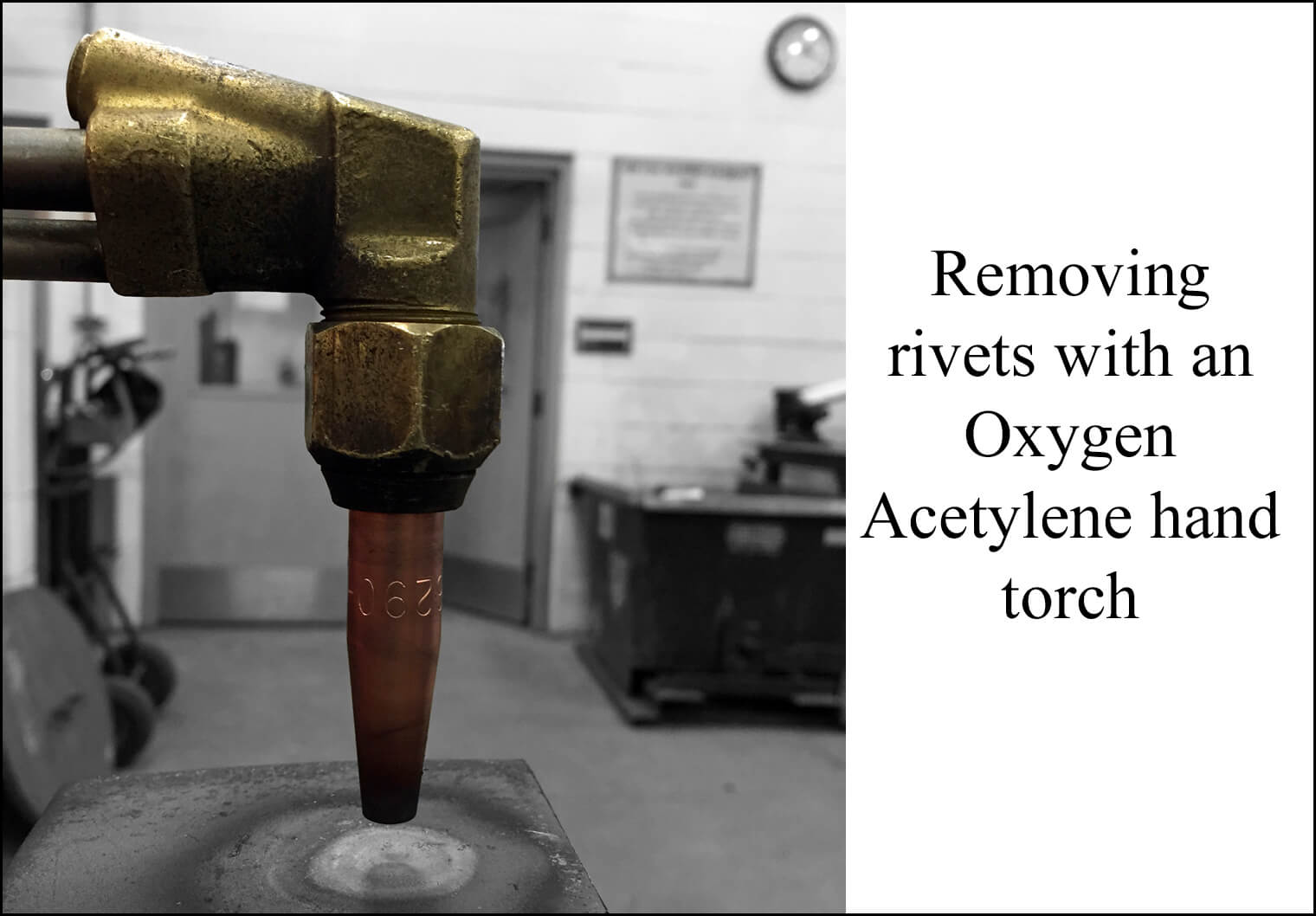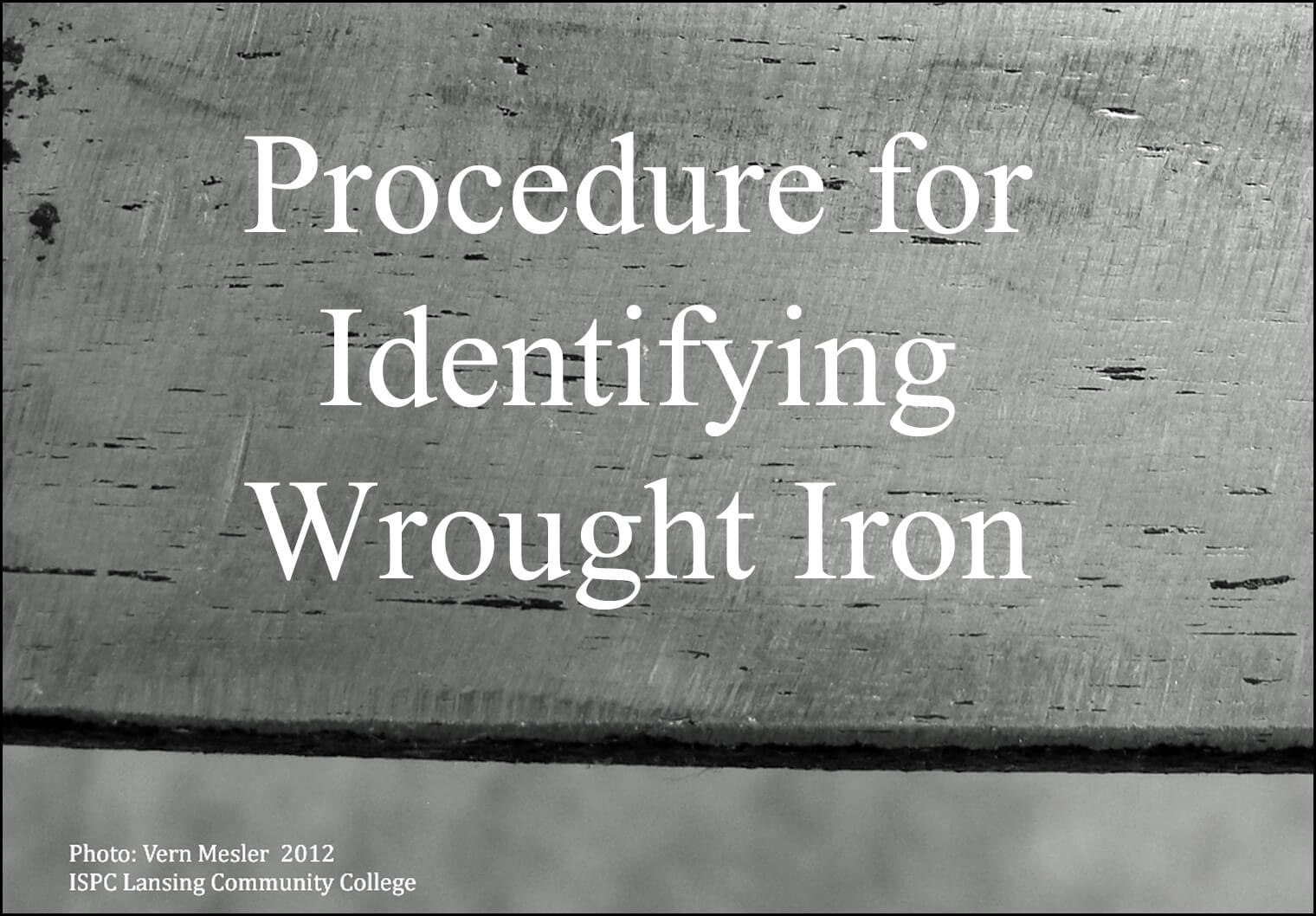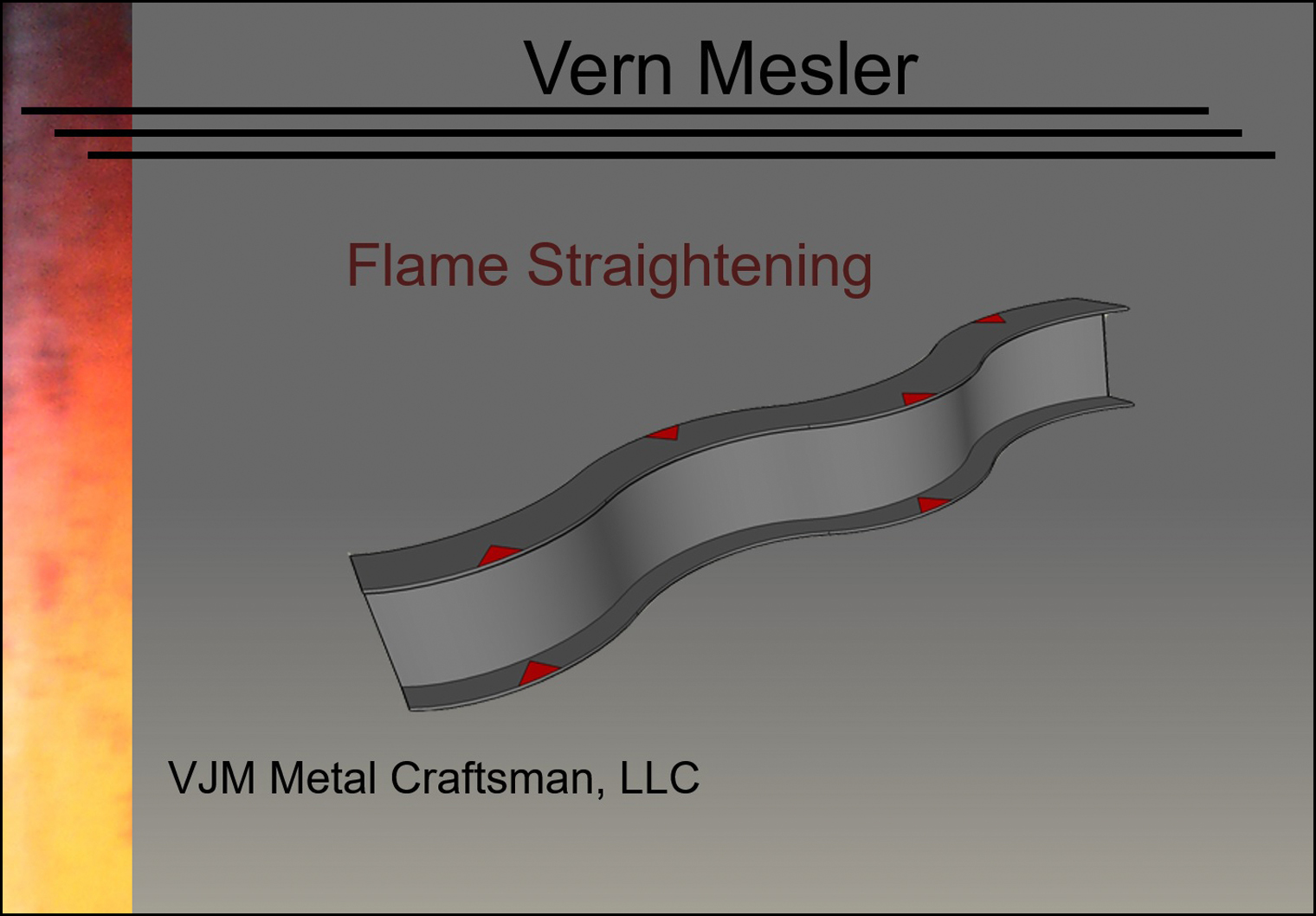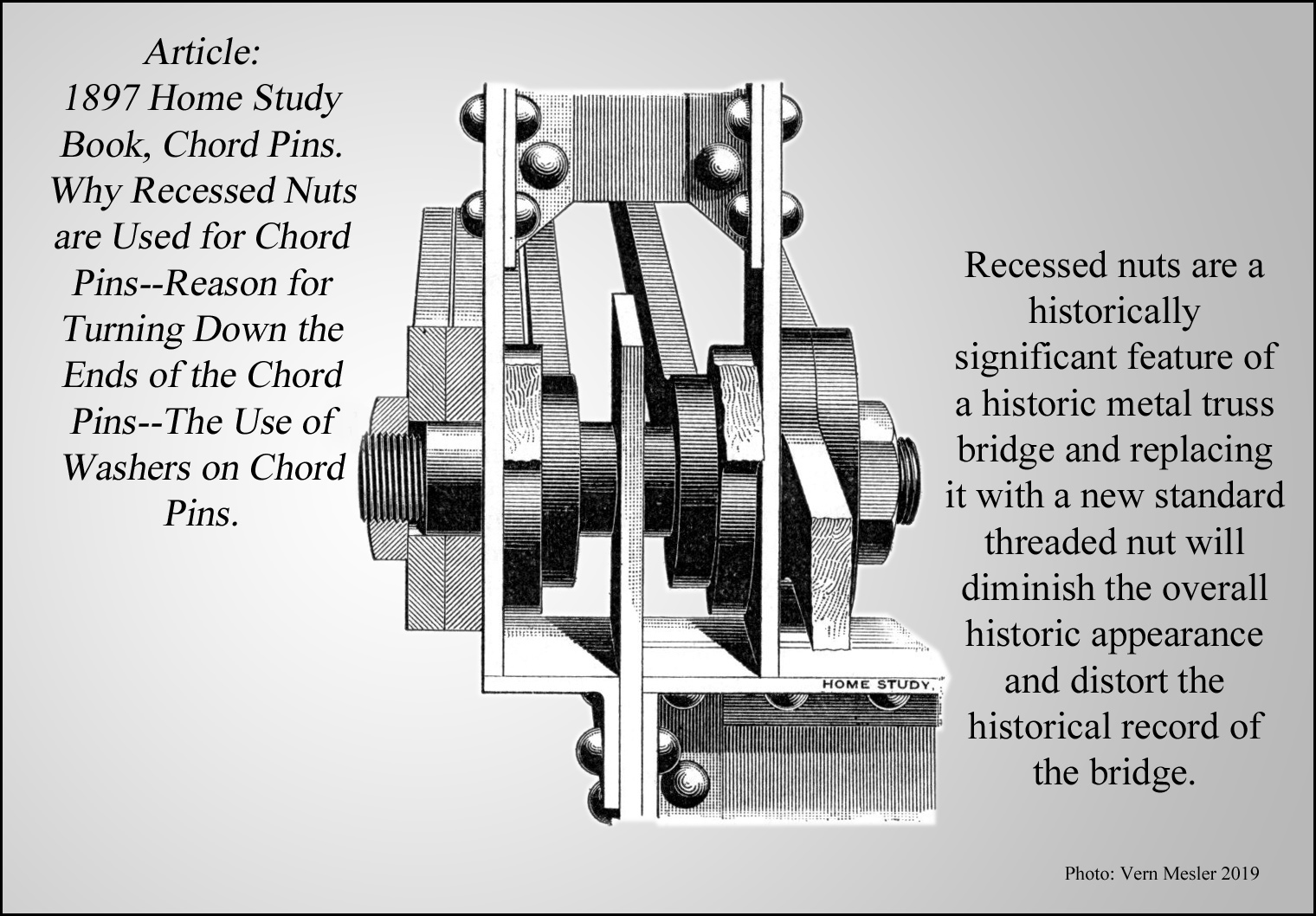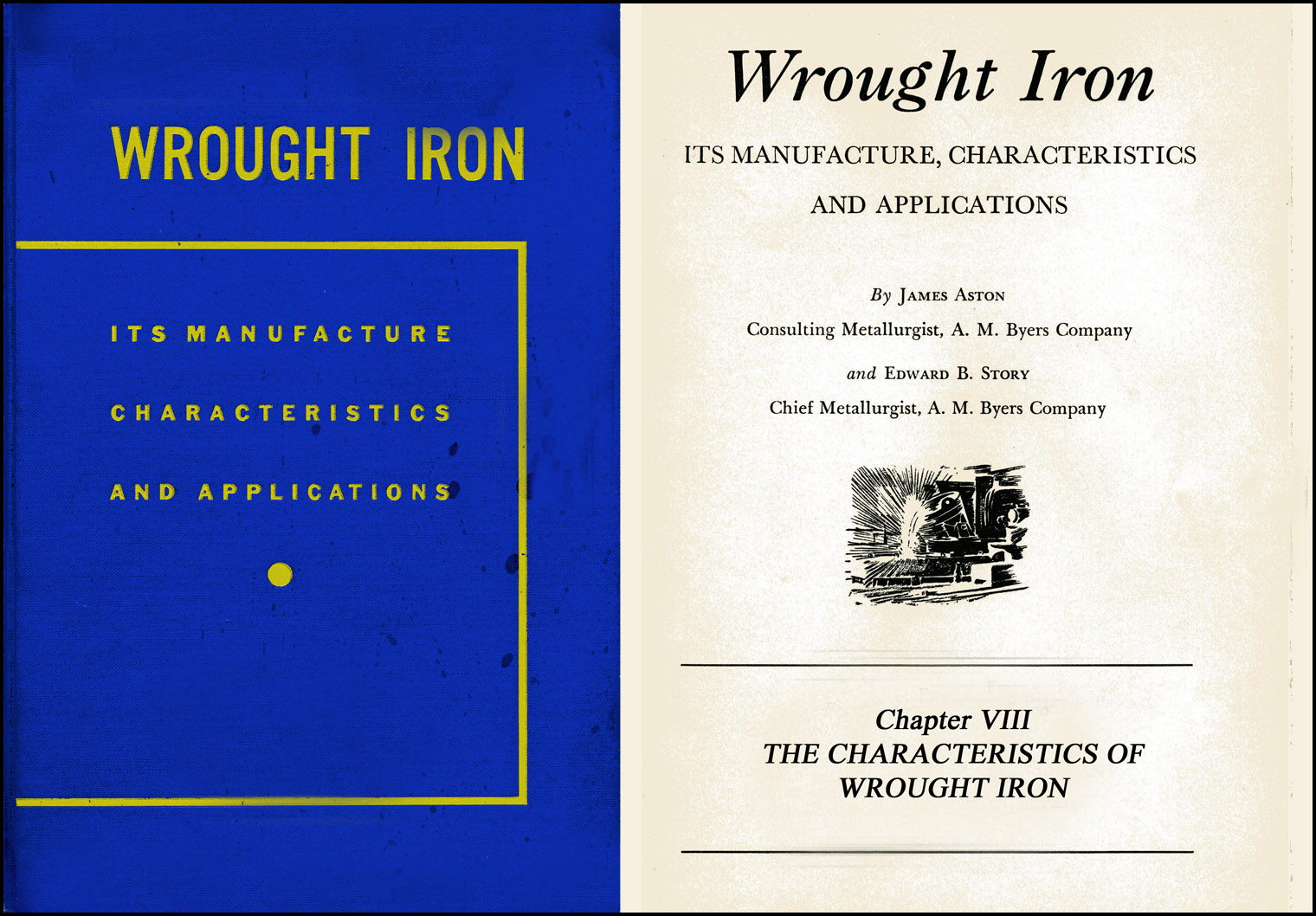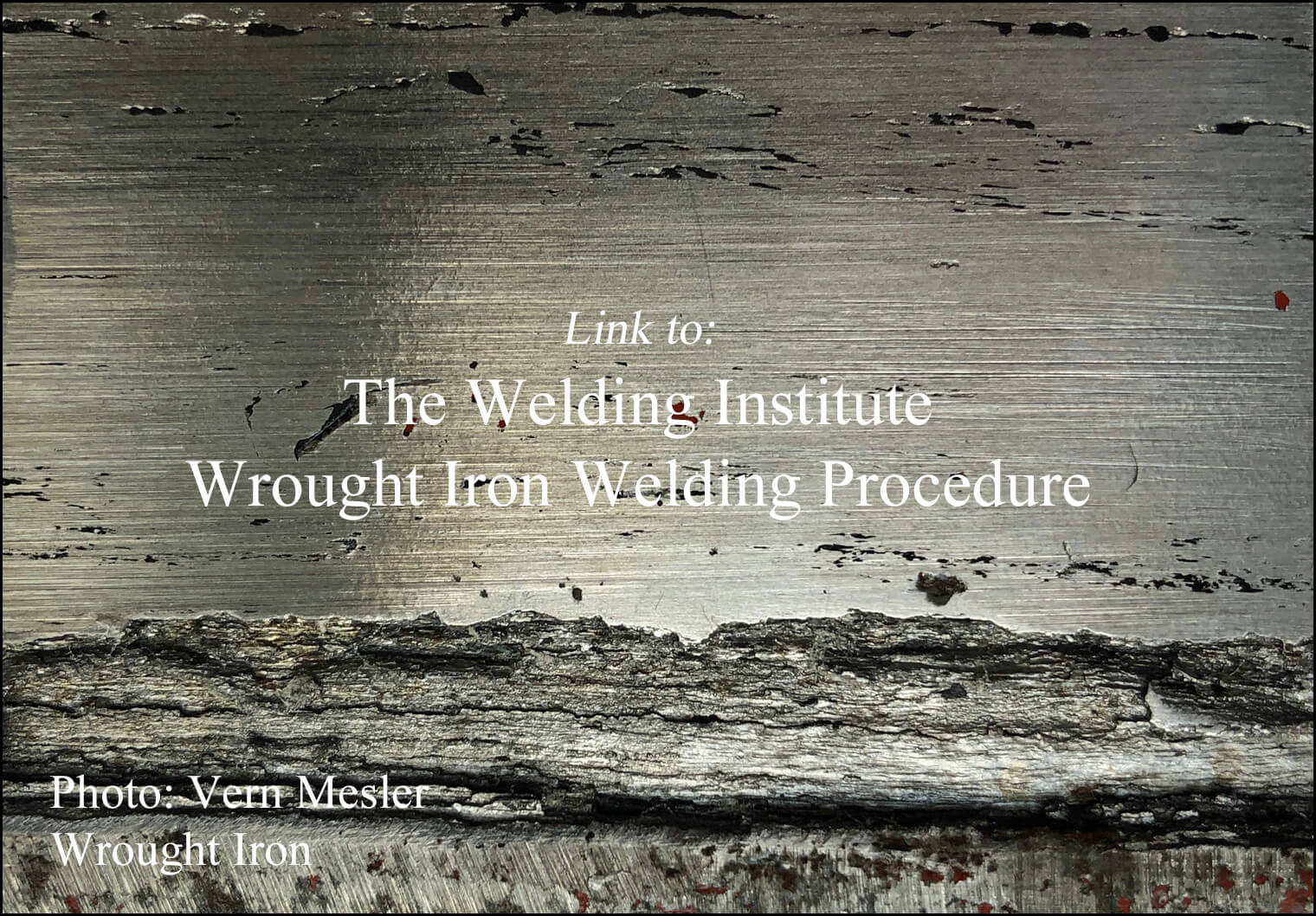Iron & steel Preservation Work
Restoration procedures for the preservation of historic metal are based on the The Secretary of the Interior’s Standards for Rehabilitation that state “deteriorated architectural features shall be repaired rather than replaced, wherever possible.” These standards do not recommend “removing or radically changing architectural metal features which are important in defining the overall historic character of the building so that, as a result, the character is diminished.”
A historic metal truss bridge has structural members that are not fabricated today, and the process used to fabricate them has been forgotten and, in some instances, no written record exist on how these members were produced.
One historic feature that is often replaced without any knowledge of understanding of its historic significance to the development of the pinned connected bridge an American design, is the chord pin and recessed nut.
Chord pins and recessed nuts was made clear from a book I purchased at an antique store: an 1896/1897 Home Study course book that explained the function of what are called recessed nuts, a combination of nut and washer in one piece. “Recessed nuts are used upon chord pins in pin connected bridges, in order that a perfect bearing may be afforded for each member connected upon them.”
